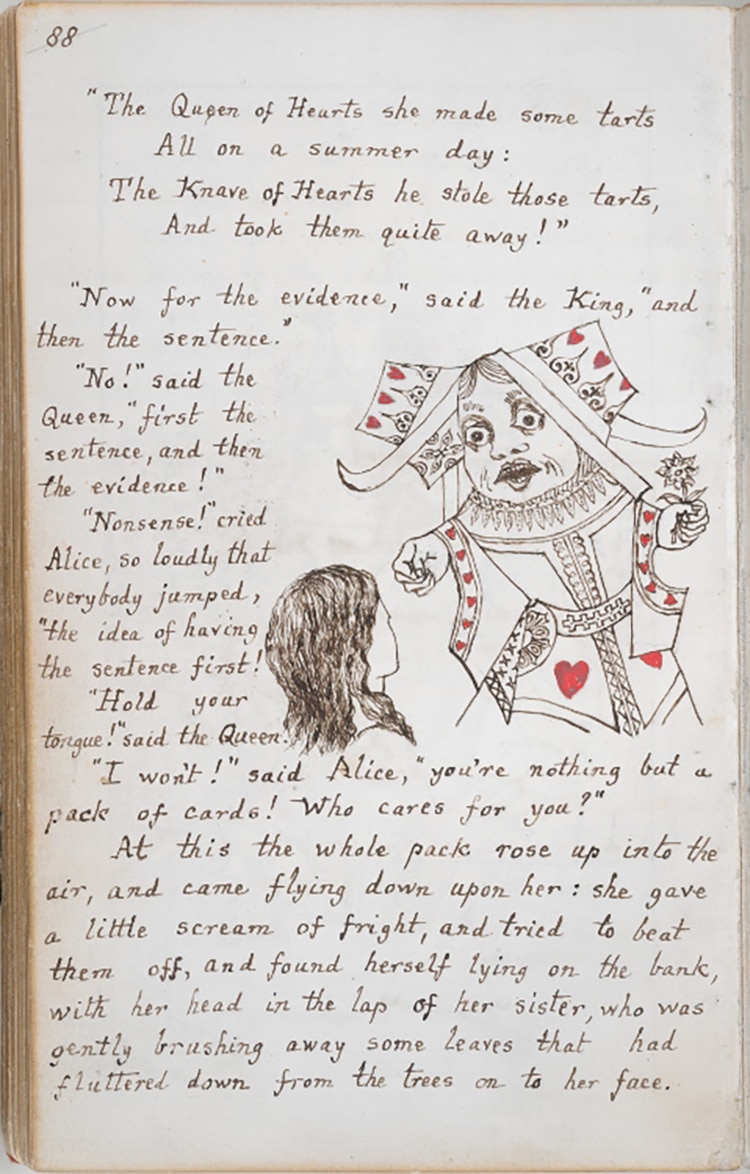
The Queen of Hearts as originally drawn. (Photo: British Library via Wikimedia Commons)
Think of Alice’s Adventures in Wonderland, and you will probably see the grinning Cheshire Cat. Perhaps you see the Queen of Hearts with her neck frill and painted cheeks or the White Rabbit with his pocket watch. Images from this legendary book are embedded in English and American culture, with reference points and quotes that conjure iconic images.
But where did such iconic images begin? Before John Tenniel created the influential illustrations for the first published volume, author Lewis Carroll (real name Charles Lutwidge Dodgson) sketched the product of his imagination in his own hand. In 1864, a little girl named Alice received a precious gift: a handwritten and illustrated manuscript by the author himself.
Charles Lutwidge Dodgson was a mathematician at Christ Church College, Oxford University. He first invented his legendary character Alice in 1862 on a boat ride on the River Thames when the three bored children of Christ Church’s dean required amusement. Lorina, Alice, and Edith Liddell were the first young ears to hear about Alice’s journey through Wonderland. Alice Liddell, whose name inspired the titular character, was reportedly enchanted.
She requested Dodgson write the story down, which he eventually did and presented it to her in 1864. Printed by hand and shorter than the later published version, the manuscript was beautifully illustrated throughout, as Dodgson proved himself not only a talented author but also a skilled artist. The book was then formally published in an expanded version with professional illustrations in 1865.
Alice’s Adventures in Wonderland has been continually in print since its first release, enchanting new generations of children and adults. It was an immediate success upon release, changing the face of children’s literature. To go back through the looking glass to where it all started, one must visit the British Library, where the original manuscript has been in its possession since 1948.
If you can’t make it to London, the manuscript has been digitized and is available online. It’s well worth a look, especially for those wanting to read the original, shorter, personalized version. Doing so allows readers to relive the characters and adventures as they were first imagined.
In 1864, a little girl named Alice received a precious gift: a handwritten and sketched manuscript by a mathematician named Charles Lutwidge Dodgson.
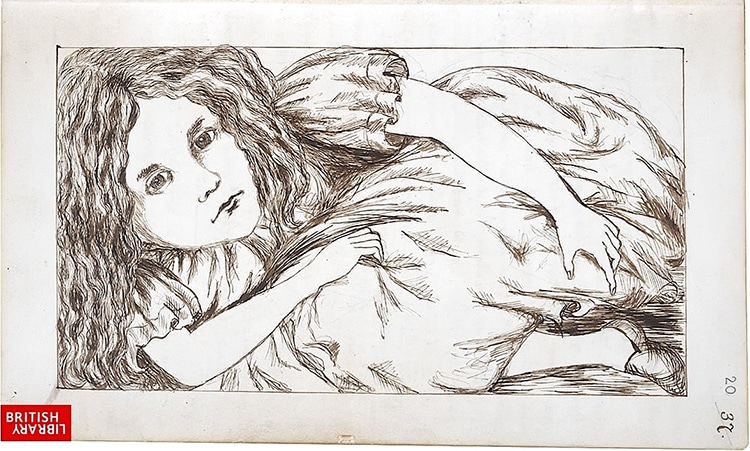
Lewis Carroll’s original manuscript drawings. (Photo: British Library)
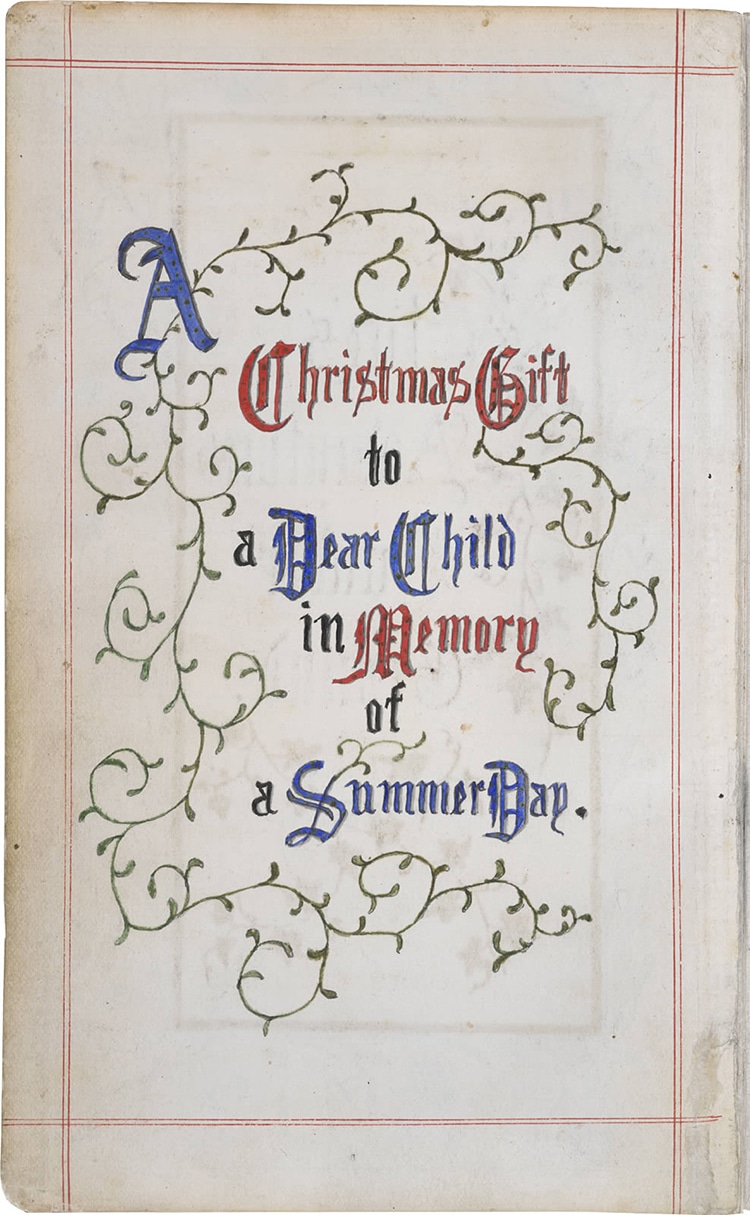
Photo: British Library
Late published under the pen name Lewis Carroll, the book quickly became a bestseller called Alice’s Adventures in Wonderland.
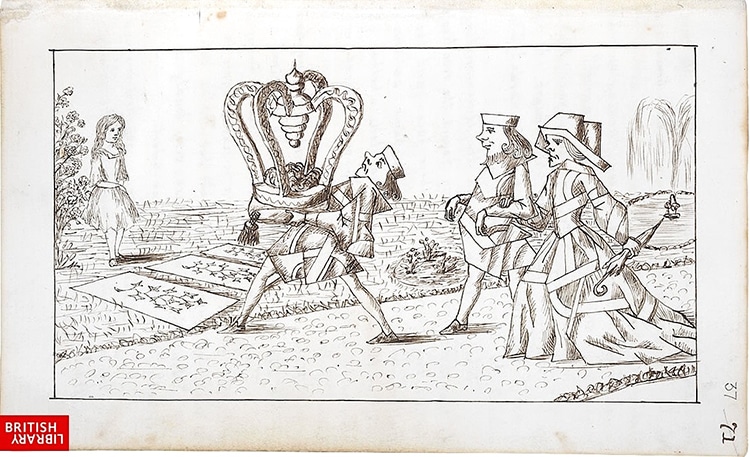
Photo: British Library
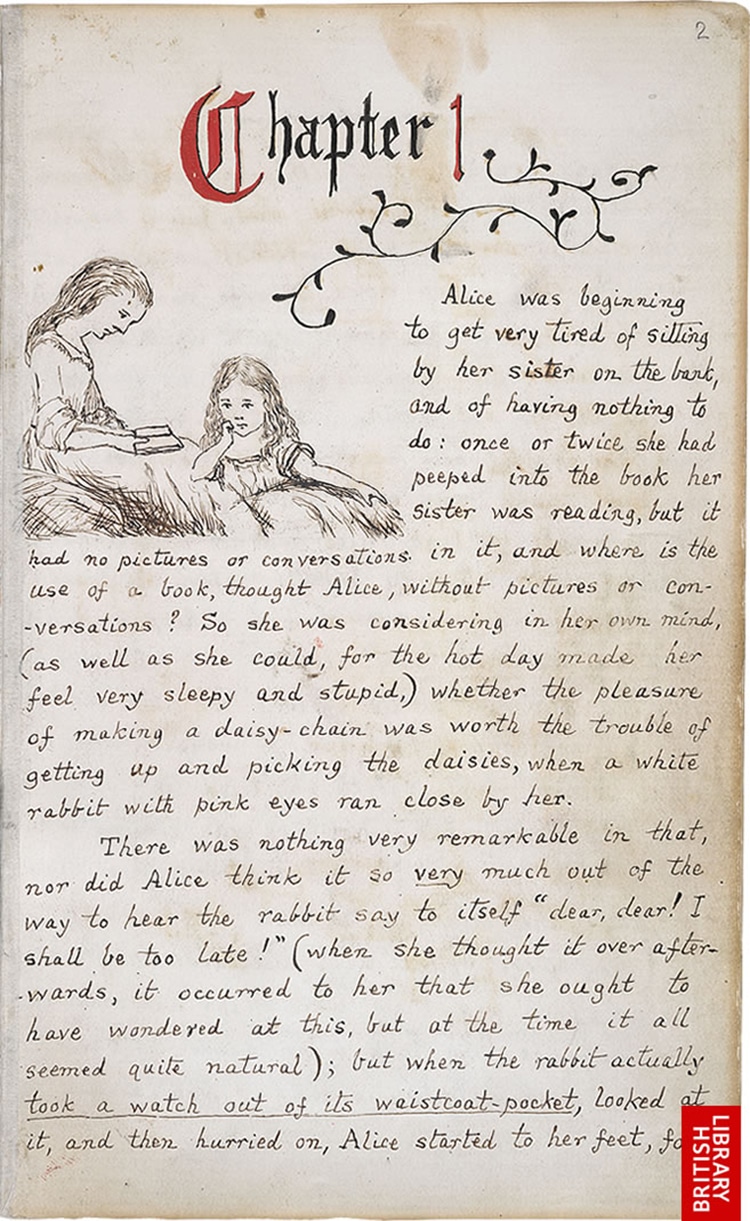
Photo: British Library
h/t: [Open Culture]
Related Articles:
How Illuminated Manuscripts Were Created During the Middle Ages
Explore 700+ Years of Historic Persian Manuscripts for Free Online
15th-Century Manuscript Covered in Medieval Cat’s Paw Prints and Urine
Salvador Dalí’s Rarely Seen ‘Alice in Wonderland’ Illustrations Are Finally Reissued
